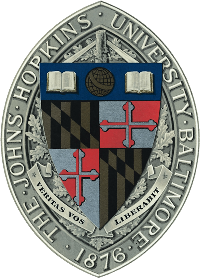Team:Johns Hopkins
From 2010.igem.org
Arjunkhakhar (Talk | contribs) |
|||
| Line 54: | Line 54: | ||
<big>'''Possible applications:'''</big> | <big>'''Possible applications:'''</big> | ||
*We see large scale applications in synthetic biology, for the integration of computer controlled voltage signals into gene expression control. We want to create a system where genes can be turned on and off with voltage signals that be delivered at precise intervals by computers, without having to deal with a hundred different potentially costly chemical reagents. In effect making biology more engineerable. | *We see large scale applications in synthetic biology, for the integration of computer controlled voltage signals into gene expression control. We want to create a system where genes can be turned on and off with voltage signals that be delivered at precise intervals by computers, without having to deal with a hundred different potentially costly chemical reagents. In effect making biology more engineerable. | ||
| - | *We are looking into creating a URA3 gene (required for uracil synthesis) downstream of our CDRE equipped promoter region, to create yeast cells whose growth is dependent on this gene being transcribed. | + | *We are looking into creating a URA3 gene (required for uracil synthesis) downstream of our CDRE equipped promoter region, to create yeast cells whose growth is dependent on this gene being transcribed. For example, this might take the form of a system whereby a SMS "text" message could be sent to a computer, which would electrostimulate cells, removing them from their growth cycle, without any need even to come into the lab! |
*We envisage a voltage activated transcriptional response to be very useful in cardiovascular research for example modeling arrhythmias in cardiac tissue, because using our system of voltage (or calcium influx) activated transcription it is possible to weed out cells that display action potentials, that is live muscle cells that are contracting. We hypothesize this could be done by causing a selectable transcriptional response to the calcium influx of the action potential. | *We envisage a voltage activated transcriptional response to be very useful in cardiovascular research for example modeling arrhythmias in cardiac tissue, because using our system of voltage (or calcium influx) activated transcription it is possible to weed out cells that display action potentials, that is live muscle cells that are contracting. We hypothesize this could be done by causing a selectable transcriptional response to the calcium influx of the action potential. | ||
Revision as of 18:20, 27 October 2010
|
Genetically engineered Saccharomyces cerevisiae that is responsive to voltage signals at a transcriptional level. Using our specifically designed CRZ1 binding elements in tandem with fluorescent reporter genes, we characterized calcineurin-CRZ1 mediated calcium response pathway in yeast. In doing so we have taken the first step in creating an interface between cellular systems and computers by allowing cells to respond to voltage signals, the language of computers. Possible applications:
|
|
Team: We are a team of 9 undergraduate students deeply interested in synthetic biology. We hail from a variety of disciplines including, chemistry, biology and engineering. We’re a fresh new team with varying levels of experience united by our passion for science. |
|
Our Accomplishments
|
 "
"


